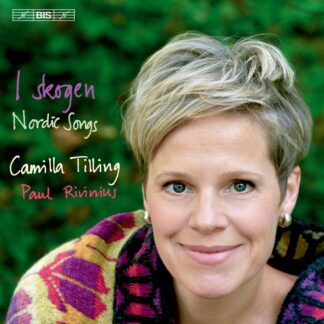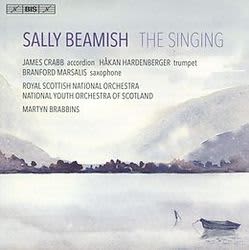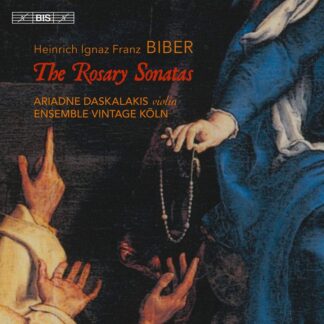Περιγραφή
Καλλιτέχνες
|
Mozart’s career can be divided neatly into two distinct periods: before and after his return to Salzburg in January, 1779, following his trip to Mannheim and Paris. He was twenty-three years old. Two years later, he took up residence in Vienna, where he was to spend the greater part of the next ten years until his death. With one or two exceptions, most of the composer’s greatest works belong to the second half of his life. Until 1781 he had travelled extensively, but his roots were always in his native Salzburg. Of the four works featured in this CD, the earliest two were composed in Salzburg, while the other two were composed in Vienna some ten years later. Three of these works have nocturnal associations – not in any Romantic sense, but according to the 18th century sense of the term “notturno”, as applied to compositions belonging to the divertimento or serenade genre, intended primarily, although not exclusively, for evening or night performance. The two Salzburg pieces and the two composed in Vienna both form natural, albeit quite different pairs. Mozart lived in Salzburg under the reign of two prince-archbishops: Sigismund Christoph von Schrattenbach (1698-1771), prince-archbishop from 1753, and Hieronymus Franz Joseph von Colloredo (1732-1812), who was elected on 14 March 1772 (in the forty-ninth round of voting!) by the canons of the cathedral. As the candidate of the court of Vienna, Colloredo received a rather cool reception. One of his first official decisions was to award Mozart an annual stipend of 150 florins for his services as Konzertmeister (violinist). This was the first salary to be earned by the young composer, then aged sixteen. Colloredo rapidly distanced himself from the policy of his predecessors. An advocate of Enlightenment principles and averse to the pomp and magnificence of the Baroque age, his study was presided over by the busts of Voltaire and Rousseau. Although Salzburg’s cultural life in general benefited a great deal from the new archbishop’s approach, its musical life suffered; in fact, a drastic reduction in public spending coupled with stringent new tax laws – Schrattenbach’s reign had left the state coffers practically empty – resulted in severe cutbacks in the financial rewards traditionally enjoyed by musicians. Despite the impact that these changes had on the musical life of Salzburg, they also gave rise to new forms of musical activity. In the mid-1770s, most of Mozart’s instrumental works were composed not for the court, although many of them were performed there, but for private patrons other than Colloredo or for performance at private concerts, a practice in which Mozart was encouraged by his father, Leopold. Hence the place in posterity of the Lodron, von Lützow and Haffner families. These often charming, delightful pieces, for which Mozart received payment in most cases, demonstrate the appreciation and support that Mozart received in Salzburg. They also served as a showcase for his skills as a virtuoso performer and enabled him to develop as a composer. The Serenade No. 6 for orchestra in D major (“Serenata Notturna”), K. 239, dated January 1776 and most likely composed for that year’s carnival celebrations, is doubly unique: because of its number of movements, reduced to three, and because of its instrumentation, confined to two small orchestras, one consisting of two solo violins, viola and double bass, and the other consisting of two violins, viola and cello (string quartet) and timpani. The title Serenata Notturna was provided by Leopold Mozart, in whose hand it appears on the autograph manuscript. Since an open-air performance was out of the question in January, the two orchestras were probably placed at either end of one large room or in two adjacent rooms. The role of the second group is chiefly to comment on and reinforce the material played by the first, with special attention being given to the timpani: here liberated from their usual role (as bass to a pair of trumpets), they are allowed to come into their own. The work opens with a March (Maestoso) endowed with particularly subtle rhythms and a style such that, instead of being presented as a mere introduction, the march fully lives up to its role as opening movement. The solemn mood of this first movement is picked up in the Menuetto, while the final movement opens with a rustic dance refrain which is successively contrasted by an Adagio recitative for soloists, a more lively march and pizzicatos, and finally an explosion of martial rhythms. The Notturno in D major KV 286 (269a) appeared a year later, in December 1776 or January 1777, and was also probably intended for performance during the carnival or New Year festivities of 1777. Its title was given by Mozart himself. Scored for four orchestral groups, each consisting of two horns, two violins, viola and double bass, the first group is not given any special name, but Mozart refers to the other three as “1st Echo”, “2nd Echo” and “3rd Echo”, thus perfectly defining their respective roles and confirming the spatial distance between them. Except in the central trio of the final Menuetto, the first orchestra states the theme while the other three repeat it in increasingly brief and fragmented echoes. This is still a long way from the rhythmic complexity of Don Giovanni (1787) resulting from the overlaying of three different orchestras. Although the work has only three movements, the last of which is a Menuetto, it is in no sense incomplete. The opening Andante, in sonata form with double reprise and lilting melody, shows how receptive Mozart was to the music of Michael Haydn (1737-1806), a fellow composer in the employ of the prince-archbishop of Salzburg. The Allegretto grazioso begins as a rondo, but in fact is yet another kind of sonata. The exceptionally long Menuetto has more in common with Mozart’s dance minuets than with those of his symphonies. In this recording, the trio – added as an afterthought in which no echo effects were indicated – is alternately played by the strings of the various orchestras. Ein Musikalischer Spass (or Musical Joke) in F major KV 522, scored for two violins, viola, double bass and two horns (a typically Salzburg ensemble), was composed in Vienna and in Mozart’s catalogue is dated 14 June 1787, about two weeks after the death of his father on 28 May. Numerous biographers of Mozart have expressed their surprise at the date of this composition, choosing to see the work – a satire on incompetent performers and composers – as a bizarre, not to say scandalous, reaction on Mozart’s part to the death of his father, Leopold. However, as the musicologist Alan Tyson has established, the date in question is erroneous. Mozart started work on Ein musikalischer Spass towards the end of 1786, long before Leopold’s illness, and did not seriously begin work on the fourth movement until the end of August 1787, some time after his father’s death. It is not known why Mozart began the work, then put it aside and later returned to it. The melodies and harmonies in the opening Allegro are extremely simple, the ideas are reiterated without the least invention, and the whole movement is strewn with less than perfect composition. After a hesitant beginning, the Menuetto gives way to chaos, with wild horns and a central trio made up of frankly banal scales. In the Adagio, the horns have the good sense to be quiet, although that fails to prevent the strings from going off at all sorts of tangents. In the closing Presto, Mozart creates a parody not only of the corresponding movement of his own Piano concerto n°19 in F major KV 459, dated 11 December 1784, but also of an exercise in fugue in C major on which his pupil Thomas Awood (1765-1838) was working in August 1786. We need hardly add that this Musical Joke could only have been devised by a composer of great genius. Absolutely nothing is known about the genesis of Mozart’s Serenade for two violins, viola, cello and double bass in G major KV 525, otherwise known as Eine kleine Nachtmusik. Dated 10 August 1787, it coincides exactly with the completion of A Musical Joke. The inscription Eine kleine Nachtmusik (literally “A little piece of night music”) that Mozart wrote in his catalogue in fact means “A short nocturne” or “A short piece of music to be performed at night”. Despite having been taken as such, the inscription should not be regarded as a title. The work has come down to us in four movements, but it originally had five, with a first minuet in second position. The missing movement, torn out of the autograph manuscript, has never been found, or at least identified. We do not know whether it was Mozart himself or somebody else who eliminated it, thereby turning the work into a miniature symphony. Nowadays, it is hard to imagine this work in any form other than its existing four movements, whether played in the one instrument per part version or, as in this recording, by a string ensemble. The opening Allegro begins with a kind of fanfare designed to grab the audience’s attention. The seductive Romanze (Andante) in various episodes is followed by an aristocratic Menuetto (Allegretto) and then an exuberant Rondo (Allegro) that is full of vitality. In Alan Tyson’s opinion, if such a thing as a “tombeau musical” or musical monument to Leopold Mozart ever existed, in Wolfgang’s mind it could well have been this work – as perfect as it is mysterious. MARC VIGNAL |










